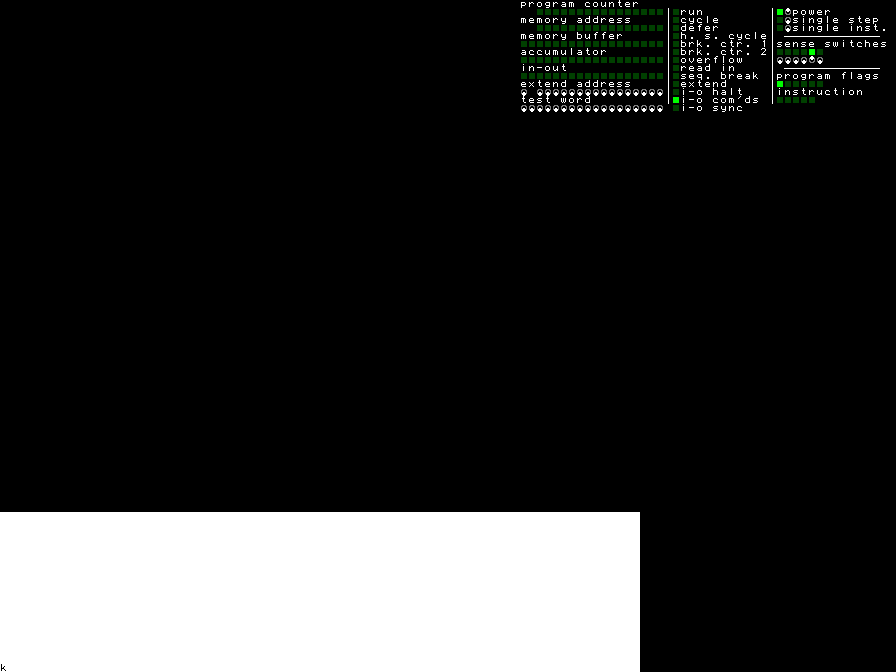
PDP-1 © 1961 Digital Equipment Corp.
The PDP-1 used an 18-bit word size and had 4096 words as standard main memory (equivalent to 9,216 eight-bit bytes, though the system actually used six-bit bytes), upgradable to 65536 words. The magnetic core memory's cycle time was 5 microseconds (corresponding roughly to a clock speed of 200 kilohertz); consequently most arithmetic instructions took 10 microseconds (100,000 operations per second) because they used two memory cycles: one for the instruction, one for the operand data fetch. Signed numbers were represented in one's complement. The PDP-1 had computing power roughly equivalent to a 1996 pocket organizer and a little less memory.
The PDP-1 used 2,700 transistors and 3,000 diodes. It was built mostly of DEC 1000-series System Building Blocks, using micro-alloy and micro-alloy diffused transistors with a rated switching speed of 5 MHz. The System Building Blocks were packaged into several 19-inch racks. The racks were themselves packaged into a single large mainframe case, with a hexagonal control panel containing switches and lights mounted to lie at table-top height at one end of the mainframe. Above the control panel was the system's standard input/output solution, a punch tape reader and writer.
The PDP-1 (Programmed Data Processor-1) was the first computer in Digital Equipment Corporation's PDP series. It is famous for being the computer most important in the creation of hacker culture.
The design of the PDP-1 was based on the pioneering TX-0 computer, designed and built at MIT Lincoln Laboratory. After building prototype models in December 1959, DEC delivered the first PDP-1 to Bolt, Beranek and Newman (BBN) in November 1960 and it was formally accepted the next April. In 1961, DEC donated the engineering prototype PDP-1 to MIT, where it was placed in the room next to its ancestor, the TX-0 computer, which was by then on indefinite loan from Lincoln Laboratory. In this setting, the PDP-1 quickly replaced the TX-0 as the favorite machine among the budding hacker culture, and served as the platform for a wide variety of 'firsts' in the computing world. Perhaps best known among these is one of the first computerized video games, Spacewar!, but among the list are the first text editor, word processor, interactive debugger, the first credible computer chess program, and some of the earliest computerized music.
Lead engineer: Benjamin Gurley
Machine's bios.